Zenith Gradua V-Twin
Zenith’s Gradua system was used by the Surrey firm to improve the performance of a long series of machines, many powered by JAP V-twin engines. This bike is a 550cc model from 1914.
This 678cc JAP- engined Zenith was raced at Brooklands 'famous banked circuit close to the firm s Weybridge base. The Gradua system's key features are the vertical ‘coffee grinder ’ handle and horizontal rod linking the crankshaft pulley and rear wheel.
Zenith’s Gradua will long be remembered for two reasons: the pioneering Gradua gear system itself, and the clever marketing campaign inspired by the Zenith’s all- conquering performance. So dominant was Zenith’s Freddie Barnes in 1911, riding a Gradua against single-speed opposition, that he won no fewer than 53 hillclimbs that year, after which the organizing Auto-Cycle Union barred the Gradua from entering many events.
Zenith's management seized the opportunity to emphasize that the Gradua had been banned because of its superior performance. The firm from Surrey produced a new badge, featuring the word ‘Barred' and a motorcycle behind the bars of a jail. The logo was used not only on the Gradua, but also on other Zenith models long after the Gradua system had been superseded.
Until Barnes invented the Gradua system in 1908, the only way of adjusting the gearing of the belt-drive bikes of the day was by changing the position of the crankshaft pulley that took the engine’s drive to the rear wheel. The problem with this system was that if belt tension was correct in high gear, it was too slack in low.
Barnes’ patent system overcame this problem by means a long handle, nicknamed the ‘coffee grinder’, which ran vertically up one side of the engine.
The bottom of the shaft was connected to both the crankshaft pulley and the rear wheel. When the rider turned the coffee-grinder, both the pulley and the spindle moved simultaneously, so the gearing could be altered while the drive belt remained in tension.
Barnes was the driving force and engineering genius behind Zenith, having founded the firm at Weybridge in 1905 to build a curious two-wheeled machine called the Tooley’s Bicar. This housed a 3hp Fafnir engine in a novel frame consisting of twin tubes joined by springs.
One set of tubes held the rider and engine; the other set supported the wheels, with steering achieved via a complex car- type hub-centre arrangement.
Many a slip...
The Bicar and subsequent Zenette models were short-lived, but Barnes had much more success with conventional motorcycles fitted with the Gradua system. The system had its drawbacks, notably that the belt was prone to slip in some gear positions, especially in wet weather.
The efficiency of the rear brake also varied with the position of the wheel. But most of the time the Gradua gave a big advantage over fixed gearing. Motor Cycle magazine’s tester was hugely impressed to find that the Zenith could restart and accelerate up the one- in-nine gradient of London’s Muswell Hill.
Zenith retained a reputation for performance long after the Gradua system had been superseded by Rudge’s Multi (which used a similar variable “'elt system without needing to move the rear wheel) and, later, by more sophisticated countershaft gearboxes and chain final drive.
The firm’s range grew in the 1920s, until in 1928 it comprised nine models, three of them 680cc JAP- engined V-twins of which the fastest was the Super- Eight Sports.
The famous banked track at nearby Brooklands was ideal for performance testing and record attempts. Zenith riders Oliver Baldwin and Joe Wright jointly held the track record at 113.45mph (182.58km/h) aboard JAP-engined V-twins, before Wright lifted it to 118.86mph (191,28km/h).
But the firm hit problems and closed down in 1930. Zenith dealer Writers of Kensington bought the marque name and restarted production. But JAP stopped building engines after the Second World War. After Writers’ stock of 750cc V-twins had been used up, Zenith faded away.
Zenith's ‘barred’ tank logo, behind the famous ‘coffee grinder’, was a reference to the impressive performance that had led to the marque being banned from many events against singlespeed opposition.
The Zenith name was famous in the 1920s, when the firm produced a variety of rapid JAP-powered twins and also competed successfully in race events, especially at Brooklands.
Zenith Gradua V-Twin Specification (1914)
- Engine Air-cooled side-valve four-valve V-twin
- Capacity 550cc
- Maximum power 6bhp approx
- Transmission Gradua system; belt final drive
- Frame Steel single downtube
- Brakes Girder front; rigid rear
- SuspensionStirrup front; contracting band rear
- Weight Not known
- Top speed 50mph (80km/h)
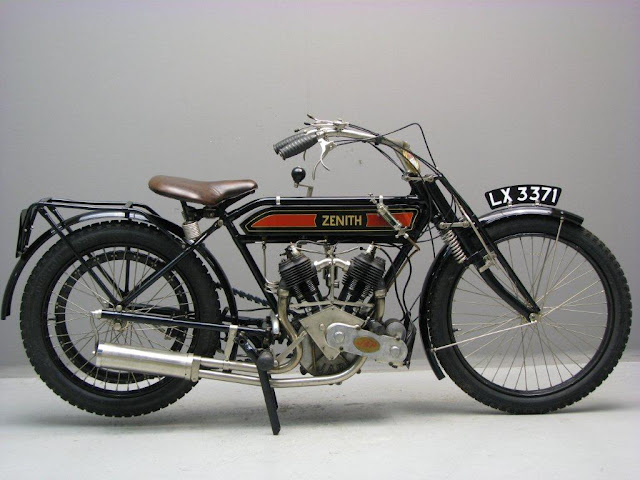
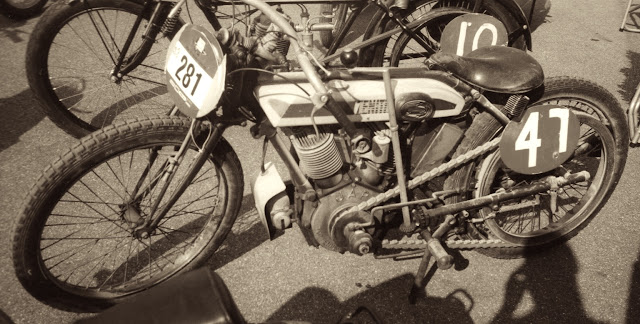

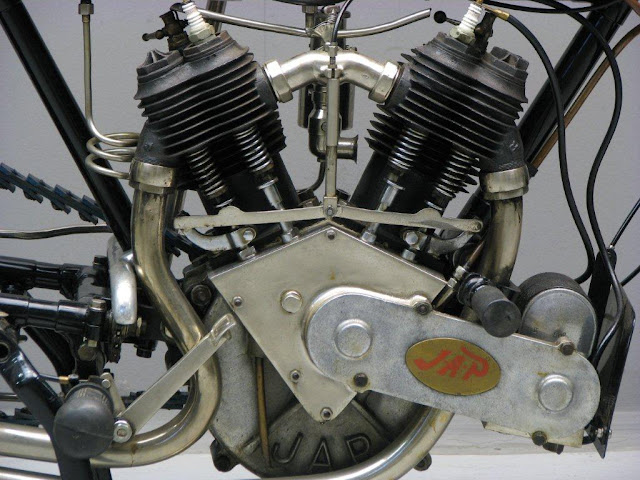


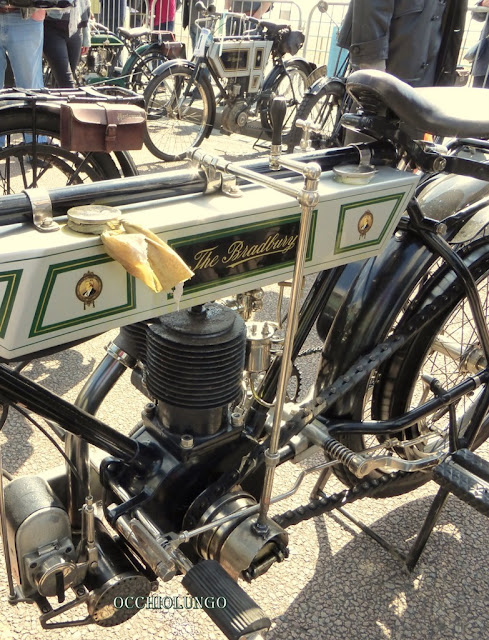
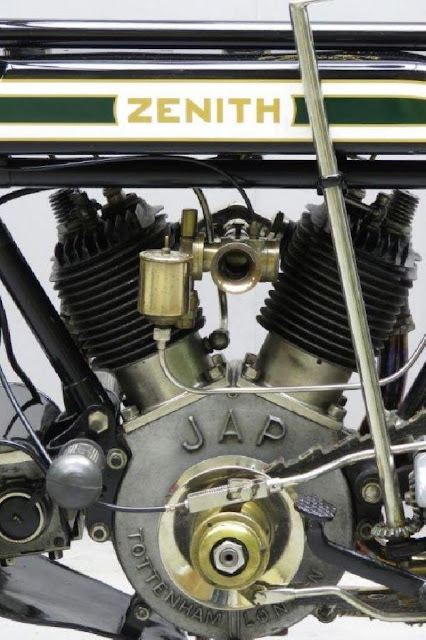











0 comments: